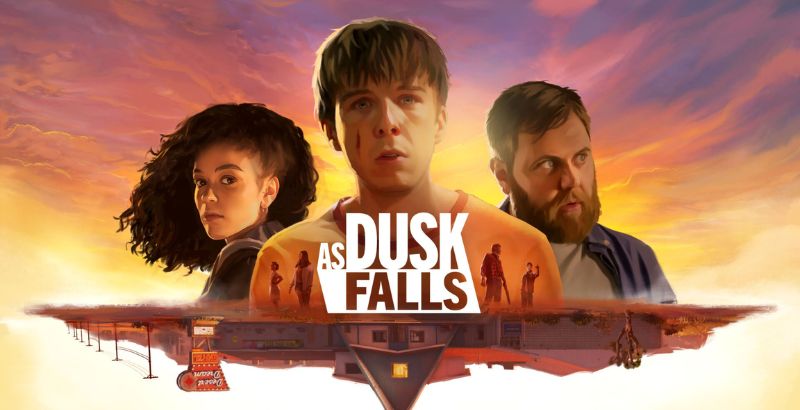
Blightbound is a new multiplayer dungeon crawler developed by Ronimo Games and published by Devolver Digital. The game sees players descending from their mountaintop refuge in parties of three to brawl their way through dungeons and fight back against mysterious monsters spawned in the Blight, a fog-like corruption that has overtaken the land.
Parties always consist of one warrior, mage, and assassin. There are twenty characters in total, all split up between the three classes, with each class having a particular role on the battlefield. Warriors aggro enemies and soak up damage, mages dish out ranged attacks and heal allies, and assassins get behind enemies to quickly deal massive amounts of damage. It is a fun balance, and every character brings something all their own to the roles.
To do so, every character has a passive ability, a primary attack, two powers, and an ultimate ability. However, all class heroes have the same class ability, so players will know how to play with characters they haven’t unlocked yet effectively. The different heroes within each class have a decent amount of variety, but it would have been nice if the differences were a bit more drastic. The heroes all have different abilities, but with every creature featuring the same class ability, the ability differences are usually slight tweaks to the same formula. Blightbound would have been much better served if each character was more drastically different from the others within its class.
This problem is exacerbated further by how long it can take to unlock new heroes. It takes hours to unlock new characters, and it can be pretty disappointing to unlock one that functions so similarly to the heroes available at the start of the game. Each hero also has their own backstory, chapters of which can be unlocked by completing certain objectives during missions. However, the backstories are very thin and don’t offer much more than a paragraph of information about each character when fully unlocked. Each character also has a personal goal for players to try and complete while running through dungeons. The personal goals are a fun addition and help motivate players to play through the levels or hunt for particular pieces of gear. However, when playing local co-op, only the main player can progress on their character’s personal goal, which seems like an odd restriction to place on local co-op players.

As for the missions themselves, they are pretty engaging with various good puzzles and fun encounters, at least the first couple of times that players run through them. After that, however, players will have to complete each level multiple times with very little changing between the runs. This makes what are otherwise solid levels start to feel overly familiar, which is a shame with how good Blightbound’s combat feels most of the time. This is especially unfortunate for the game’s boss battle. The boss battles are splendid, but playing through them so often with no variation quickly reduces them to easy exercises of boredom.
One of the more peculiar of Blightbound’s issues is how confusing its menus and progression can be. Every hero can be leveled up to level 8 and levels up each time the player completes a dungeon while playing as them. Leveling up a hero grants players a few skill points to disperse between a standard array of skills. Players can also equip different weapons and trinkets to give their heroes stat boosts or bonuses like dealing more damage or triggering effects after killing an enemy. However, the progression overall leaves the player wanting. Leveling up never feels gratifying or very impactful on how one plays their heroes. Getting better equipment mostly makes the numbers that come out of enemies bigger, even if the equipment has other effects included with it.
The confusion when playing Blightbound comes from the game’s unclear structure. Players are given a small introduction to the game’s world, but it does very little to explain what is going on or what the player’s ultimate goal is. The explanation provides little context beyond “the blight is bad, and somebody should probably kill stuff to stop it,” and it is difficult to know why your actions in the game matter at all.

The structure of Blightbound’s story is also very open-ended, often leaving the player to drive progress themselves in pursuit of completing character backstories or personal quests. However, the backstories are not interesting enough to motivate the player much. Not having much of a main storyline present causes progressing through the game to feel aimless and often frustratingly stagnant.
Blightbound’s problems are very disappointing because they occur on the top layer of a very solid foundation. The game’s combat is satisfying and fun, especially when playing with a group of friends. It is often quite challenging and requires intelligent play and strategic coordination, making encounters feel rewarding on the first completion. However, the problems with the game’s overarching systems, repetitive nature, lack of enemy variety, and lack of a fleshed-out world leave Blightbound feeling like a game that just needed some more time to become something really special. The developers have stated their intentions for free updates in the future, so hopefully, they will be able to fix some of the game’s problems with them so that it can reach its full potential.
Blightbound is available now on PC, Xbox One, Xbox Series S/X, and PS5/4.
Blightbound
-
Rating - 6/106/10
TL;DR
Blightbound’s problems are very disappointing because they occur on the top layer of a very solid foundation. The game’s combat is satisfying and fun, especially when playing with a group of friends. It is often quite challenging and requires intelligent play and strategic coordination, which makes encounters feel rewarding on the first completion. However, the problems with the game’s overarching systems, repetitive nature, lack of enemy variety, and lack of a fleshed-out world leave Blightbound feeling like a game that just needed some more time to become something really special.







